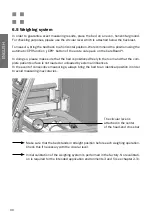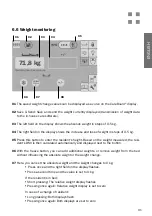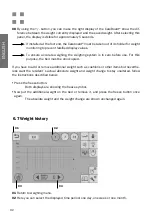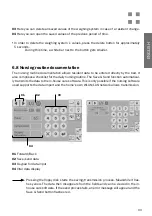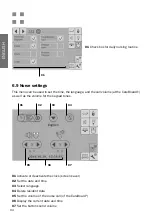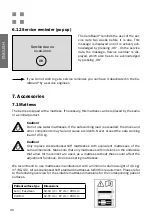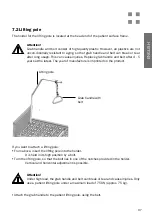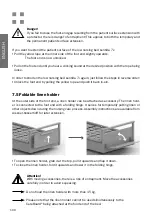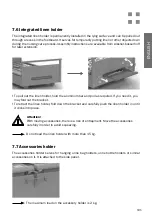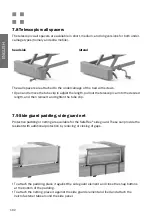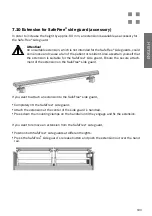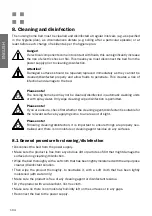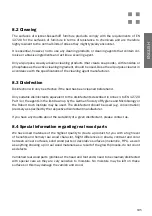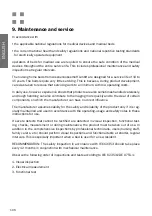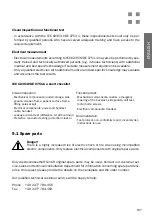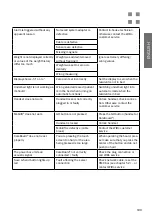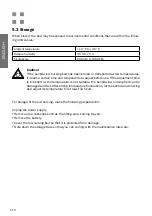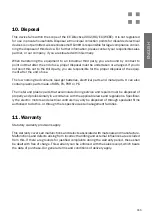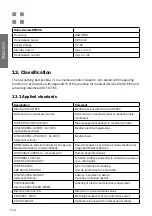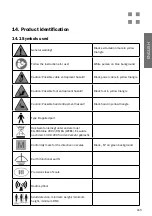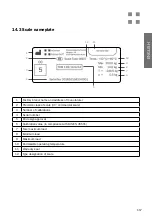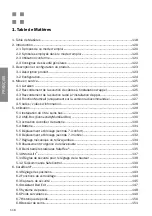
104
ENGLISH
8. Cleaning and disinfection
Please note!
The nursing home bed may not be cleaned/disinfected in automatic washing units
or with spray water. Only wipe cleaning/wipe disinfection is permitted.
8.1 General procedure for cleaning/disinfection
▪ Disconnect the bed from the power supply.
▪ Make sure the product is free from any obvious dirt or particles of dirt that might damage the
surface during cleaning/disinfection.
▪ Wipe the bed thoroughly with a soft cloth that has been lightly moistened with the all-purpose
cleaner/disinfectant solution.
▪ Then wipe the product thoroughly, to neutralize it, with a soft cloth that has been lightly
moistened (with water only)
▪ Make sure the product is free of any cleaning agent or disinfectant residue.
▪ Dry the product with an absorbent, lint-free cloth.
▪ Make sure no there is no moisture/humidity left on the surfaces or in any gaps.
▪ Reconnect the bed to the power supply.
Danger!
If electrical components come into contact with fluids, this can significantly increase
the risk of electric shock or fire. This means you must disconnect the bed from the
power supply prior to cleaning/disinfection.
Attention!
Damaged surfaces should be repaired/replaced immediately as they cannot be
cleaned/disinfected properly and allow fluids to penetrate. This creates a risk of
infection and damage to the bed.
Please note!
Following cleaning/disinfection, it is important to ensure things are properly neu
-
tralized and there is no moisture or cleaning agent residue on any surfaces.
The nursing home bed must be cleaned and disinfected at regular intervals (e.g. as specified
in the hygiene plan), as circumstances dictate (e.g. soiling after a particular episode) or at
least before each change of resident as per the hygiene plan.
Please note!
If you are unsure, check first whether the cleaning agent/disinfectant is suitable for
the relevant surface by applying some to an area out of sight.
Summary of Contents for sentida 7-i
Page 350: ...350...

